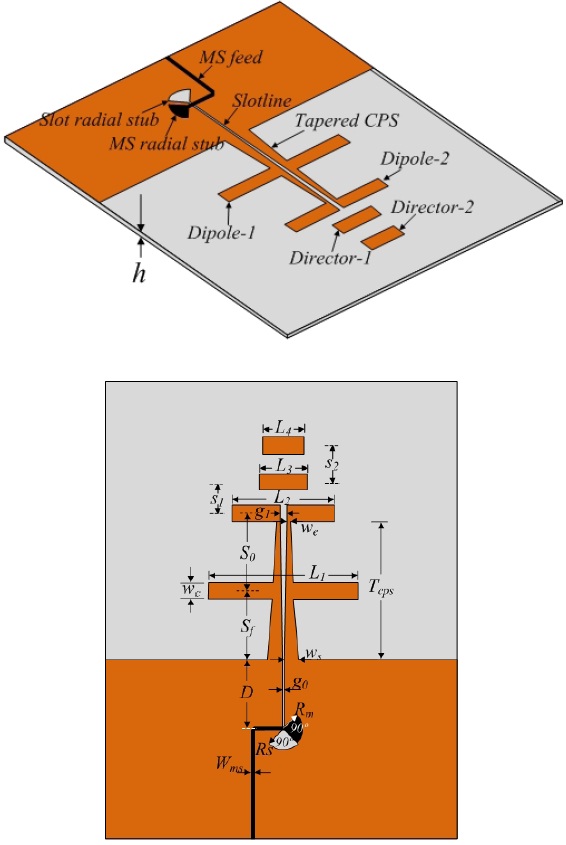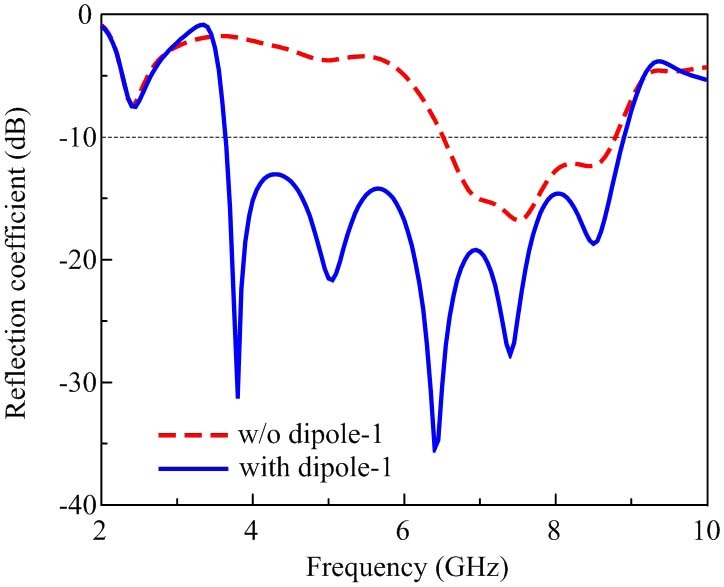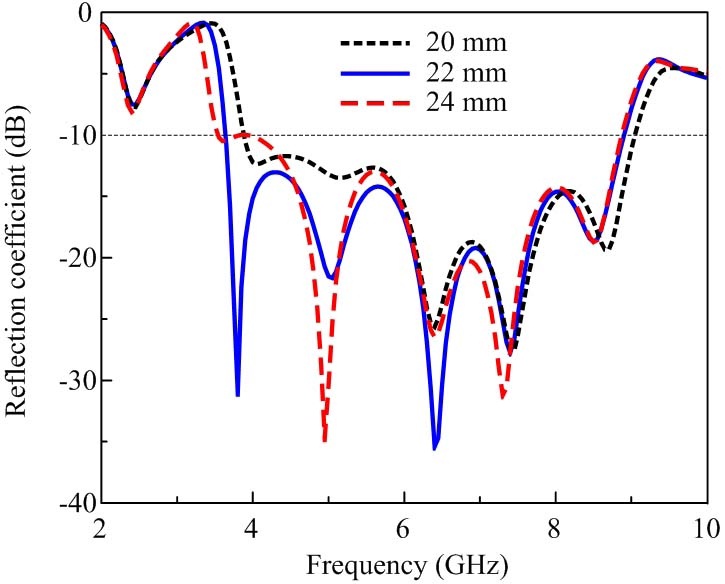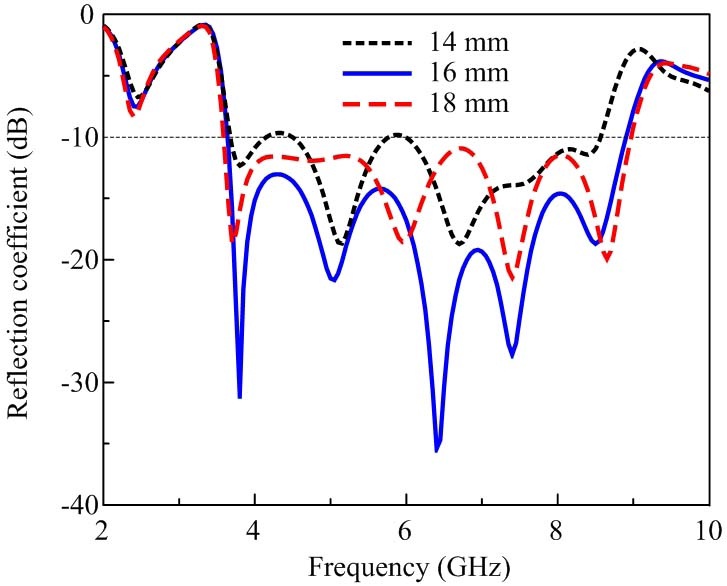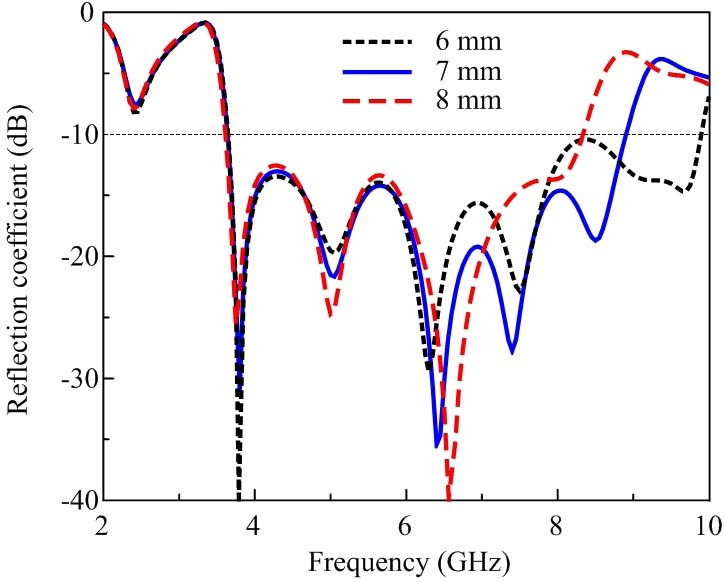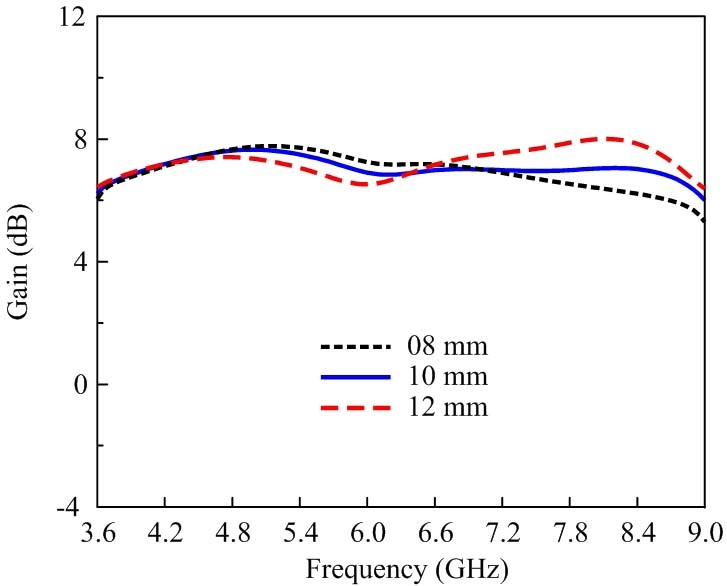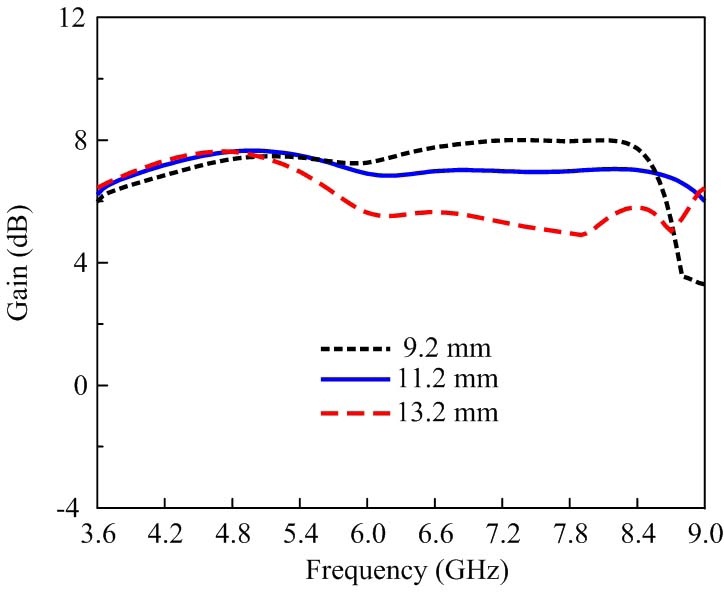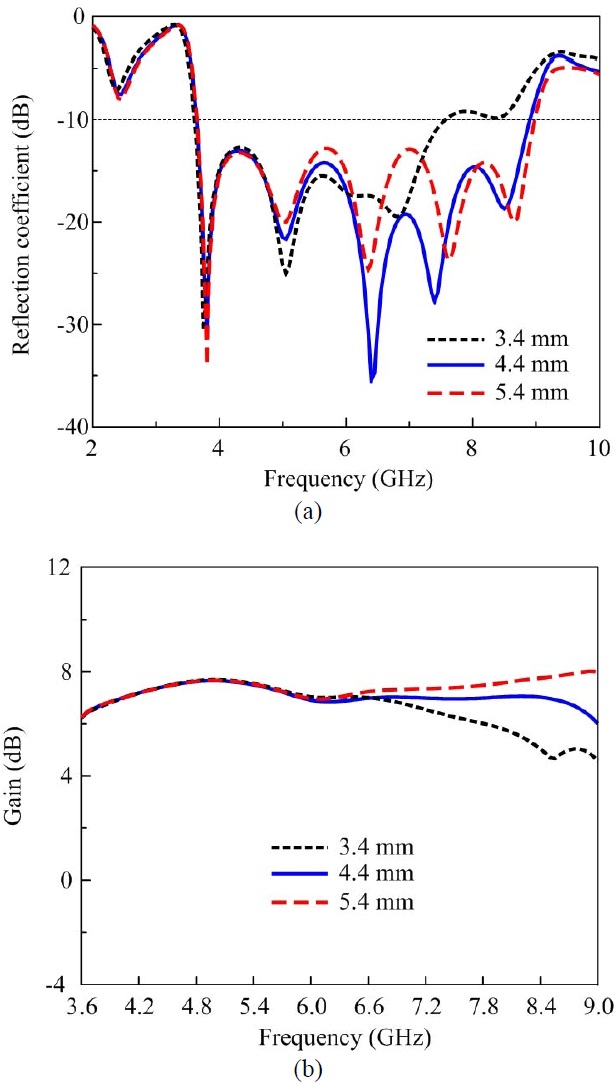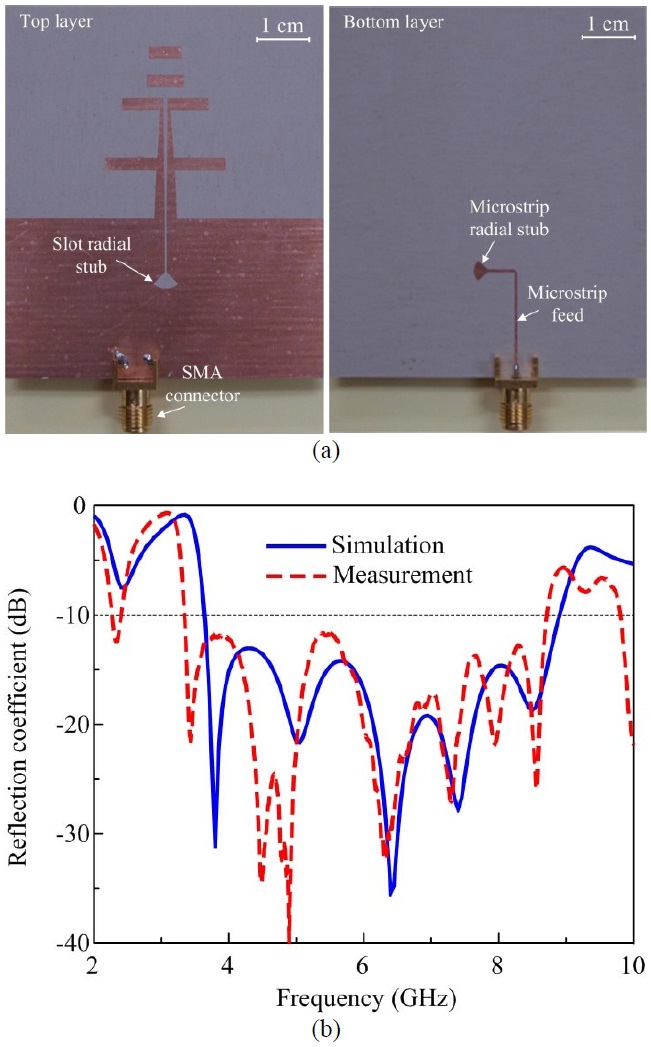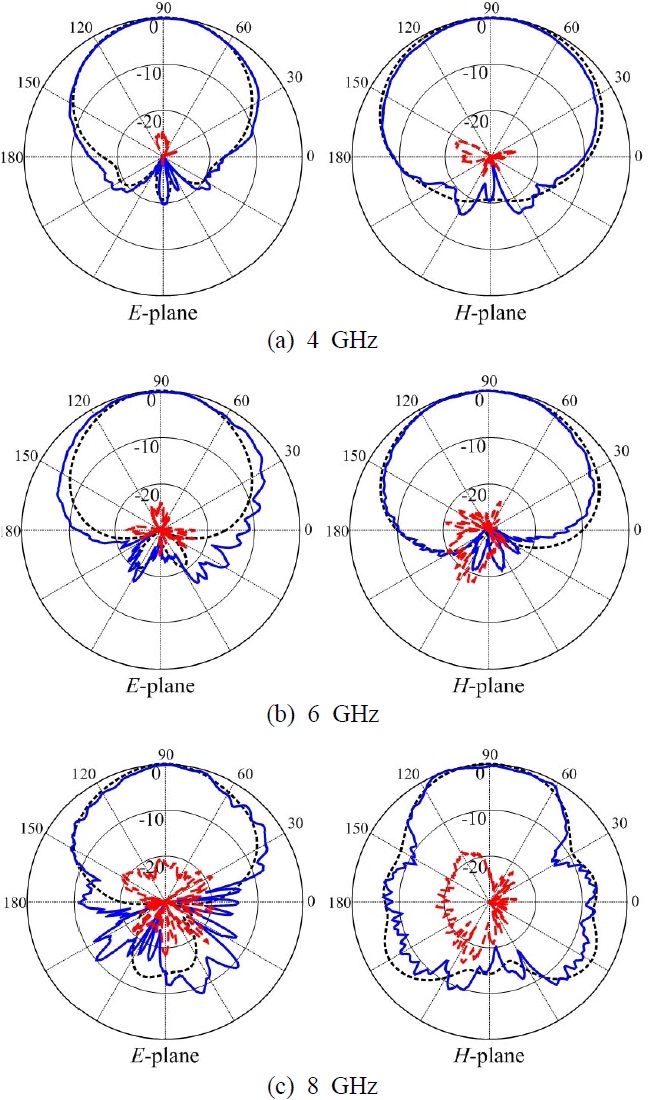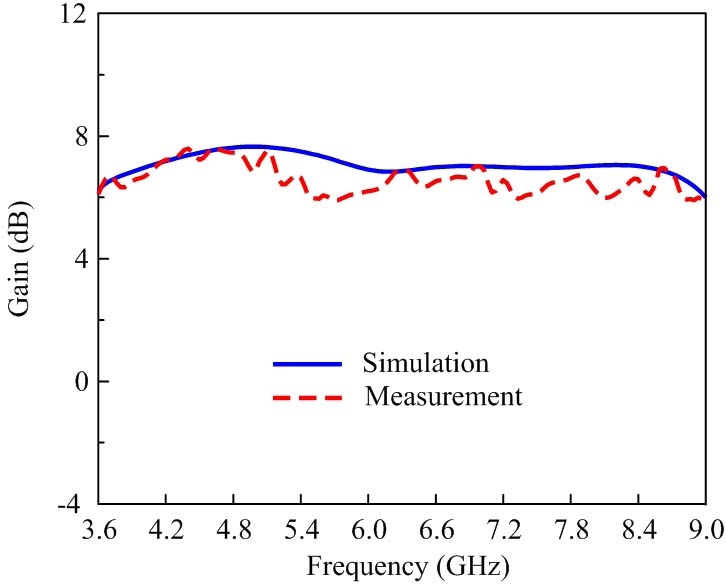



Quasi-Yagi antennas are commonly used for many applications in the microwave and millimeter-wave bands because of their broad bandwidth, high gain, low cost, and high-radiation efficiency, as well as their ease of fabrication. These antennas can be fed by several types of feedlines, including microstrip lines (MS) [1]~[6], coplanar waveguides (CPW) [7], [8], coplanar striplines (CPS) [9], [10], or slotlines [11]. Quasi-Yagi antennas utilize a regular dipole as the driver, which means that the bandwidths are approximately 50 % or less and may not be sufficient for some applications. Eldek enhanced the bandwidth by introducing MS-fed planar antennas with double dipoles [12] and double rhombuses [13] as the main radiation elements. These antennas achieved a wide bandwidth with two parallel strip feedlines printed on opposite sides of the substrate. However, the radiation patterns were degraded due to the asymmetric structure of the antennas.
This paper presents a microstrip-to-slotline transitionfed quasi-Yagi antenna with wide bandwidth and flat gain. The transition consists of a microstrip radial stub and a slot radial stub, each with the same 90° angle, but with different radii for impedance matching between the microstrip line and the slotline [14]. The bandwidth is enhanced by replacing the regular dipole driver with two parallel dipoles of different lengths. These double dipoles are connected to the slotline by a coplanar stripline, which is tapered to improve the impedance matching conditions. The antenna incorporates two parasitic strips as directors, and a truncated ground plane as the reflector, to achieve small gain variation across the operating bandwidth. Compared with the double dipoleYagi- Uda antenna [15], the presented antenna has a more compact and simpler structure and a wider impedance bandwidth.
Fig. 1 shows the geometry of the wideband microstrip- to-slotline transition-fed quasi-Yagi antenna. The antenna was designed on a 60×70 mm RT Duroid 6010 substrate with a dielectric constant of 10.2, a loss tangent of 0.0023, and a thickness of 0.635 mm. It consists of a microstrip-to-slotline transition as the feed, two parallel dipoles as the main radiation elements, two printed strips as the directors, and a ground plane as the reflector. The microstripline was designed on the back side of the substrate and had a characteristic impedance of 50 Ω. The slotline was designed with a characteristic impedance of approximately 70 Ω, due to a compromise between the narrow slot width required to obtain a characteristic impedance of 50 Ω and the limitations of the available fabrication technique. Therefore, a microstrip radial stub and a slot radial stub, each having the same angle of 90° but with different radii, were inserted into the transition to provide impedance matching between the microstrip-line and the slotline. Two parallel dipoles acted as the primary radiation elements, which were directly connected to the slotline by a coplanar stripline. The initial lengths of dipole-1 and dipole-2 were approximately one-half of the effective wavelengths (
[Table 1.] Optimized antenna design parameters.
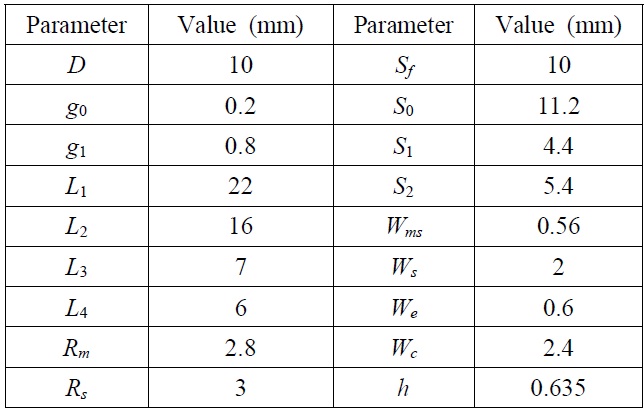
Optimized antenna design parameters.
As mentioned before, the key motivation for the use of two parallel dipoles is to achieve multi-resonances, and consequently, to further enhance the bandwidth. This is clearly observed in Fig. 2, which shows the simulated reflection coefficient of the antenna with/without dipole-1 (
Fig. 3 shows the simulated reflection coefficient as a function of frequency for different lengths of dipole-1 (
This study also investigated the antenna design parameters that negligibly affect the reflection coefficient (not shown), but strongly influence the gain. Fig. 6 shows the simulated gain as a function of frequency for different spacings between the ground plane and longer dipole (
Fig. 8 shows the variations in the antenna characteristics as a function of frequency for different spacings between the shorter dipole and director-1 (
Ⅳ. Simulation and Measurement Results
The antenna was fabricated on both sides of an RT/Duroid 6010 substrate with a 20-
The normalized radiation patterns of the antenna at 4, 6, and 8 GHz are illustrated in Fig. 10, and showed a good agreement between the measurements and simulations. The radiation patterns are symmetric and stable, with a front-to-back ratio and cross-polarization level better than 15 and ?17 dB, respectively. At a frequency of 4 GHz, the measurements resulted in a half power beamwidth (HPBW) of 83° and 113° along the E- and H-planes, respectively. At 6 GHz, the measurements resulted in a HPBW of 92° along both E- and H-planes. At 8 GHz, the measurements resulted in a HPBW of 83° and 77° along the E- and H-plane, respectively. As shown in Fig. 11, the measured gain of the antenna was 6.3~7.5 dBi across the bandwidth, which agreed closely with the simulated gain of 6.4~7.6 dBi. Some ripples in the measured results could be attributed to scattering effects arising fromrement setup. The antenna also exhibited a relatively small gain variation (±0.6 dB) at 3.6~9 GHz; thus, it can be used for transmitting or receiving applications in wideband wireless communication systems.
This paper introduced a microstrip-to-slotline transition- fed quasi-Yagi antenna with a wide bandwidth and a flat gain. Wideband characteristics and stable radiation patterns were achieved by replacing the regular dipole driver with two parallel dipoles of different lengths, which were directly connected to the slotline by a tapered coplanar stripline. The planar structure, stable radiation pattern, wideband characteristics (3.34~8.72 GHz), small gain variation (6.9±0.6 dBi), low cross-polarizations (<?17 dB), and high front-to-back ratio (>15 dB) of the proposed antenna make it widely applicable to wideband wireless communication systems.
